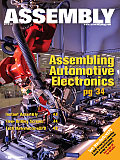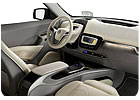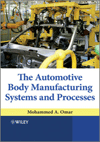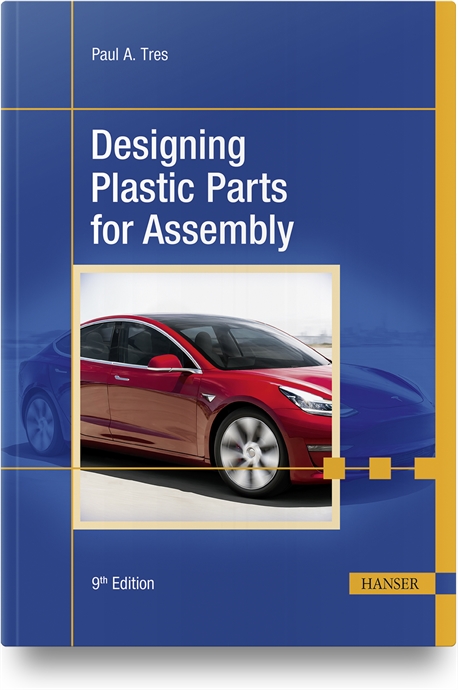
Today, just about every square inch of a typical automobile is crammed full of electronic components. Microprocessors, sensors, connectors and other increasingly smaller and more robust devices are inside doors, under seats, behind dashboards, inside tires and under hoods.
The average car contains 50 electronic control units, supported by 100 million lines of code, accounting for up to one-third the value of a new vehicle. However, electronic content varies by vehicle segment. For instance, the typical Toyota sedan contains approximately $890 in electronic control unit content. For Lexus models, that figure jumps to $1,500.
“Looking just at the value (as paid by OEMs to their suppliers) of electronic control units (ECUs) fitted to light vehicles, the global average-value-per-vehicle will rise from around $650 in 2010 to $760 in 2015, a compound average annual growth rate of 3 percent,” says Ian Riches, director of the global automotive practice at Strategy Analytics Inc. “But, there’s a substantial variation across those figures. A small car manufactured in India may have well below $300 of ECU content today. A luxury car manufactured in Germany could easily exceed $2,200 of content.”
“A modern car is a complex system of interconnected computers controlling multiple safety, convenience and performance functions,” notes Angus Watson, director of global business development for automotive industry solutions at Kimball Elec-tronics Group, a leading electronics manufacturing services provider. “Cost reduction and improved performance are driving the use of smaller and more integrated components and designs.”

Smaller, Cheaper, Lighter
“Smaller, cheaper, lighter and higher quality are the watchwords for automotive electronics today,” explains Riches. “This is often achieved by integration. For example, we are seeing the integration of ABS-stability control functions with air-bag control.”As electronics technology and the auto industry continue to converge, this trend will intensify. That’s good news for consumers and suppliers, but bad news for automotive engineers who must create efficient and cost-effective ways to package and produce an endless array of new gizmos such as rearview cameras, adaptive cruise control and parking assist systems.
Automakers are eager to enhance lighting, climate, safety, navigation and infotainment systems in their vehicles. “Our focus is on taking electronics and computer technology and applying them to cars and trucks and making the vehicle an extension of your home-connected, comfortable, convenient, productive and safe,” says Jim Buczkowski, director of Global Electrical and Electronics Systems Engineering at Ford Motor Co.
Buczkowski and his colleagues recently developed the auto industry’s first system to seamlessly integrate a variety of technologies to provide hands-free phone operation, media player control, emergency assistance, diagnostic and information services, traffic reports and directions on the road.
And, Ford is currently rolling out a rearview camera system that will be available on nearly all of its models by the end of this year. It uses an exterior camera embedded in the rear of the vehicle that sends images to a video display in the rearview mirror or the navigation system screen when a vehicle is in reverse. Eventually, side-view mirrors will be replaced with cameras.
A proposed mandate from the U.S. Department of Transportation calls for all new vehicles weighing less than 10,000 pounds to incorporate backup cameras by 2015. “The mandate will benefit suppliers of advanced driver-assist systems electronics, particularly those that make small displays, camera sensors and related equipment,” says Jeremy Carlson, analyst for automotive research at iSuppli Corp. Suppliers that should benefit the most from the new rule include Bosch, Denso, Gentex, Hella and Valeo.
Automakers and suppliers are currently working on other types of new technology, such as heads-up displays and vehicle-to-vehicle communication systems, that will also fuel future demand for electronics. “The key challenges facing [automotive engineers is] to make [cars] more efficient and safer,” says Riches. “Electronics will play a huge part in meeting these challenges.”
“Emissions and safety regulations have driven a lot of electronics content [in the past],” explains Chris Thibodeau, director of advanced electrical-electronic architecture and systems engineering at General Motors Co. “Fuel economy and CO2 emissions are driving electronics now. The next wave will be safety, security and infotainment.”
“We are adding features at a faster rate than the miniaturization, reliability and cost plans are able to keep up,” warns Thibodeau. “So, the expectation of improved reliability, cost and mass never happens at the vehicle level, resulting in frustration from those on the outside looking in.” Thibodeau believes the electronic content of today demands a feature partitioning (bundling and packaging of features) and planning approach so that module content and complexity is managed effectively.
“As consumers demand more engaging and intuitive user interfaces, auto manufacturers are looking to develop human-machine interaction (HMI) and user experiences that are aligned with and reinforce their vehicle brands,” says Michael Tschirhart, human factors technical fellow and research and development manager at Visteon Corp. “Consumers want their vehicles to share some of the advanced capabilities of their electronic devices. [At the same time], vehicle manufacturers are trying to reduce system complexity on global platforms, while addressing the desire for regional variances.”
To tackle the challenge, Visteon engineers have developed a new range of high-definition graphic display platforms, physical control interfaces and supporting HMI tool chains that bring together software, graphics and physical elements. “These enhancements, which can be reconfigured for specific vehicle applications, can greatly reduce auto manufacturer development times while increasing design flexibility,” claims Tschirhart.

Assembly Challenges
Automotive electronics are often more difficult to mass-produce than devices intended for consumer electronics, appliances and other products. Cars typically have longer life spans than most consumer electronic devices. For instance, most people don’t keep their cell phones for six years, but they do keep their cars that long. As a result, there’s a big different between a camera that goes into a car and a camera that’s used in a phone.Vehicles also have different operating specifications. “Cars have to operate in extreme outdoor temperatures and are expected to have a life of up to 10 years and over 100,000 miles of use,” explains David Alexander, principal automotive technology analyst at ABI Research. “Electronic components have to be tested to withstand vibration and meet very demanding quality standards.”
All automotive products are expected to last for the life of the vehicle and survive extremes of cold found around the world, in addition to high levels of vibration and humidity. “Products that live in or on the engine will see even greater extremes, plus exposure to oils and acids,” says Kimball’s Watson. “This requires the use of automotive-grade electronic components and extensive testing and validation of products.”
Automotive electronics vendors are typically asked to produce aerospace-quality components with zero defects, but at con-sumer prices. AEC-Q100, a critical stress test qualification for automotive integrated circuits, is the entry-level standard for quality for most application areas.
“There is now also the new ISO 26262 standard on functional safety, which is an adaptation of the IEC 61508 functional safety standard for automotive electric-electronic systems,” says Riches. “This standard embraces the functional safety aspects of the whole development process. It thus includes activities such as requirements specification, design, implementation, integration, verification, validation and configuration. This [applies to both] hardware and software.”
As automakers seek more electronics in the future, GM’s Thibodeau predicts they will put more pressure on the supply base for part traceability, 100 percent assurance of correct part placement, flawless lead-free solder operations, and extremely high end-of-line test yields above 99 percent.
“As OEMs start to demand more in terms of long-term reliability vs. initial quality, the manufacturing industry must find a way to eliminate the occurrences of solder defects, misplaced parts, incorrect part substitution issues, and damaged parts through their manufacturing processes,” warns Thibodeau. “OEMs are becoming less tolerant of these types of defects.”
According to Alexander, cost and packaging are huge factors, as well as quality. “Making components small is vital, as not very many vehicles today have much space, and manufacturers are constantly looking for weight savings,” he points out.
With the ongoing shift toward smaller, fuel-efficient vehicles, Watson claims cost pressures on suppliers are relentless. “Vehicle manufacturers need innovation and added content without increasing the cost of vehicles,” he points out. To address those challenges, Watson says assembly equipment and processes “are being developed and implemented with a primary focus on speed (faster assembly), improved reliability (reduced scrap and improved yields), and smaller, more dense assembly layouts.”
Another challenge facing the auto industry is the fact that it tends to be far slower than other market niches when adopting smaller semiconductor geometries or the latest integrated circuit designs.
“This is because it is difficult to implement technology that will remain viable for the 10-plus year lifespan of the average car,” says Susie Inouye, research director and principal analyst at market research firm Databeans Inc. “Another reason that engineers have trouble implementing the latest process geometries is the environment, which can range in temperature from -40 to 250 C. Shock potential also requires extremely durable mechanical designs. So, automotive-grade products are relatively more expensive than their consumer counterparts.”
According to Riches, “smart OEMs are focusing their efforts on providing seamless integration and leveraging of consumer electronics devices, such as smart phones, tablets and media players. This market moves on much shorter design cycles than the typical 36 months of the auto industry.”
But, building-in cutting-edge capabilities is a huge challenge. For instance, built-in, factory-fitted navigation systems often lag behind the features offered by lower-cost aftermarket portable devices, says Riches.

Future Trends
Most consumers are so accustomed to using handheld electronic devices in their daily lives that it makes them demand the same seamless level of service when they’re driving. For instance, people want hands-free calling capabilities and integration of their handheld devices with on-board electronics.
Voice control is emerging in response to this increase in driving complexity. “We [also] see increased applications for capacitive controls, haptic feedback and improved display resolution,” says GM’s Thibodeau. “Driver distraction regulation will only increase the demand for electronics to [address] active safety and autonomous vehicle operation solutions.
“General Motors is interested in many types of technologies that improve the features and functions associated with fuel economy enablers, active safety systems, security trends, and infotainment-telematics strategies,” adds Thibodeau. “We are looking to identify catalogs of hardware controllers that are prequalified to work as part of our Autosar [software] strategy.
“For example, we are looking for distributed battery management systems that are capable of handling high voltage,” Thibodeau points out. “New ICs will enable lower cost and higher reliability in the battery monitoring area for hybrid- and electric-propelled vehicles. We are also looking at a variety of sensing technologies that could be part of active safety and autonomous systems, including ultrasonic, radar and optical sensors.”
As electric vehicles emerge, they will have unique requirements. “In a gasoline vehicle, you can typically drive 400 miles or so on a tank, and unless you are truly in the middle of nowhere, finding someplace to refuel is not normally an issue,” says Riches. “However, in an EV with potentially only 100 miles of range, this is not the case. The vehicle will ideally need to know what your intended destination is, what the traffic and weather conditions are, and the location of public recharge points so that it can advise on the feasibility of your journey. What may be easily achieved in light traffic on a calm summer day could well be impossible [when travelling] into strong head-winds in heavy traffic that has been disrupted by snow and ice.”
Hard wiring in vehicles is extremely complex today, due to the wide variety of media (copper, fiber, coax, and power line) routing throughout a car. “New forms of Ethernet are now emerging that promise to deliver all of the characteristics for linking automotive electronics together with a single glass strand or wire pair,” says Joel Hoffmann, strategic market development manager in the Automotive Solutions Div. of Intel Corp. “This is an example of sharing innovation from the computing industry with automotive and reducing costs through re-use.
“In addition, heads-up displays will provide an alternative to traditional car dashes,” adds Hoffmann. “We’ll see more intelligent driver-assist functions for recognition, object detection, and collecting and analyzing sensor information to control speed, and potentially even stop a car.”
Further down the road, wireless technologies will emerge on the auto electronics scene. “But, the use of wireless technologies for communication between vehicle systems and sensors is still a long way off,” claims Riches. “Wired networks will prevail for many years yet. Only systems that truly need to be wireless, such as keyless entry systems and tire-pressure monitoring systems, will be wireless. Whenever you go wireless, you increase the possibility of security problems, and the vulnerability of wireless systems has been documented.” A
To learn more about automotive electronics trends, click www.assemblymag.com and search for:
- Intel Is Inside . . . Cars





